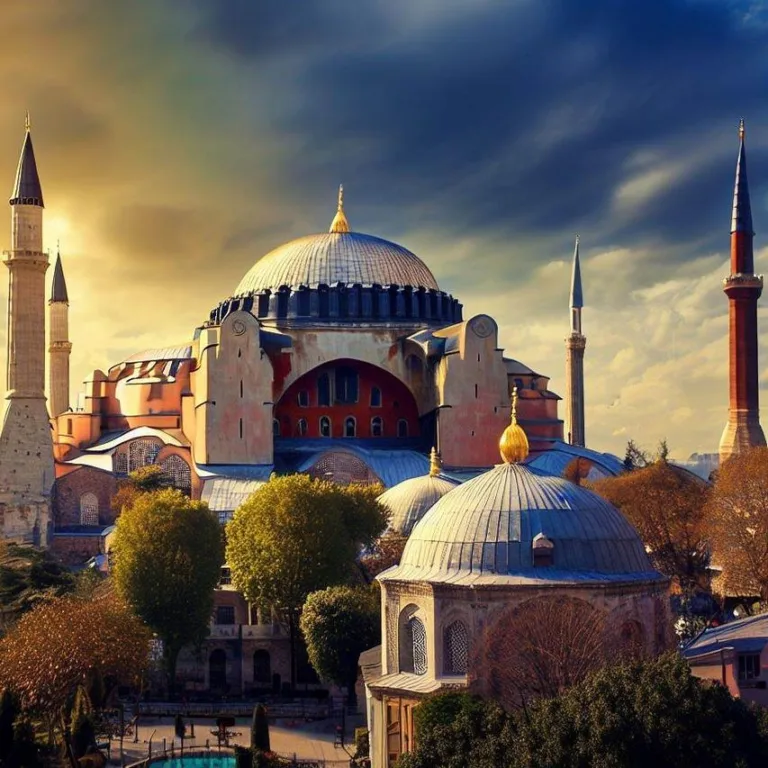Welcome to our comprehensive guide to Hagia Sophia, a remarkable architectural wonder that has captivated the world for centuries. As a symbol of Byzantine opulence and cultural heritage, Hagia Sophia stands as a testament to the artistic and engineering achievements of its time.
The magnificent hagia sophia
Hagia Sophia, often referred to as Ayasofya in Turkish, is a historic marvel located in Istanbul, Turkey. Its name translates to „Holy Wisdom,“ and it has lived up to its name through centuries of history. Originally constructed as a cathedral in the year 537 during the reign of Emperor Justinian I, Hagia Sophia held the prestigious title of the world’s largest cathedral for nearly a thousand years. Its enormous dome, an architectural feat of its time, symbolized the grandeur of the Byzantine Empire.
An Architectural Marvel
The design of Hagia Sophia is a true masterpiece. Its colossal dome, supported by intricate pendentives, seems to defy gravity. The interior is adorned with stunning mosaics, marble columns, and precious stones, creating an awe-inspiring atmosphere that leaves visitors in awe of the skill and craftsmanship of its builders. The impressive dome, which seems to float effortlessly, remains a hallmark of architectural ingenuity.
Transformations through time
Over the centuries, Hagia Sophia underwent significant changes that reflected the shifting powers and religious ideologies of the region. In 1453, following the Ottoman conquest of Constantinople, the cathedral was converted into a mosque. This transformation brought about alterations to its interior, including the addition of minarets and the covering of some Christian mosaics.
Then, in 1935, a pivotal moment occurred. The Turkish government, under the leadership of Mustafa Kemal Atatürk, transformed Hagia Sophia into a museum. This decision aimed to celebrate the building’s historical and architectural significance while embracing Turkey’s secular ideals.
A Return to Controversy
In recent years, Hagia Sophia has once again sparked debates and discussions. In 2020, Turkish authorities decided to revert the status of Hagia Sophia to a mosque. This decision reignited conversations about the balance between historical preservation and contemporary use, as well as the implications for cultural and religious inclusivity.
Faqs about hagia sophia
Q: What is the significance of Hagia Sophia?
A: Hagia Sophia holds immense historical and architectural significance, representing the grandeur of the Byzantine Empire and its influence on subsequent cultures.
Q: Can visitors still explore Hagia Sophia?
A: Yes, visitors can explore Hagia Sophia, which is open to the public. However, the nature of the visit may have changed due to its evolving status and functions.
Q: How can I appreciate the beauty of Hagia Sophia’s architecture?
A: To fully appreciate Hagia Sophia’s architecture, take your time to study the intricate details of its interior, from the mosaics and marble work to the ingenious design of the dome.
Q: What does the future hold for Hagia Sophia?
A: The future of Hagia Sophia is likely to continue generating discussions about its preservation, use, and the balance between its historical significance and contemporary needs.
As you immerse yourself in the rich history and architectural marvels of Hagia Sophia, you’ll be transported to a time of great artistic achievement and cultural exchange. The building’s enduring legacy is a testament to the power of human creativity and innovation.
Viz také:






